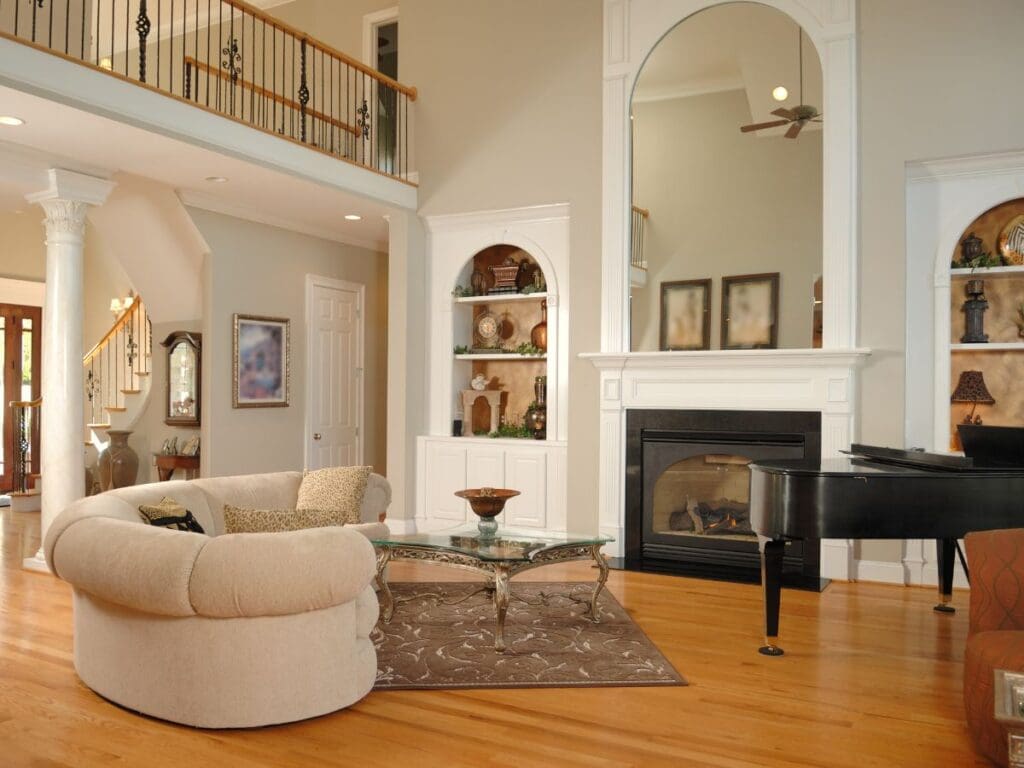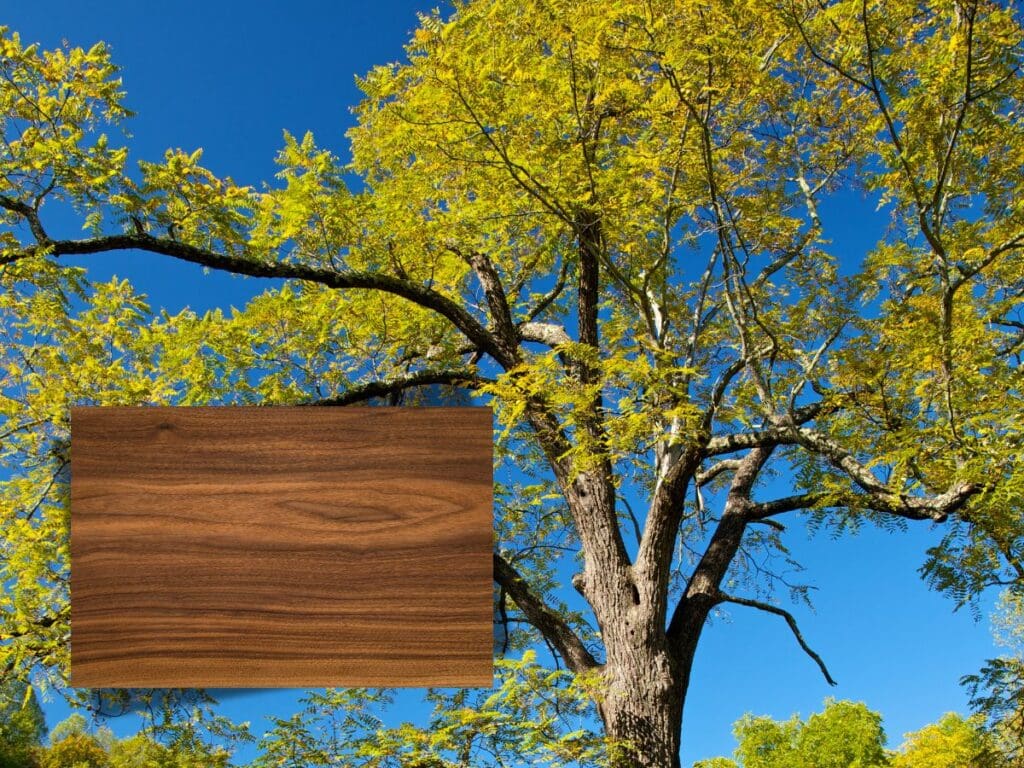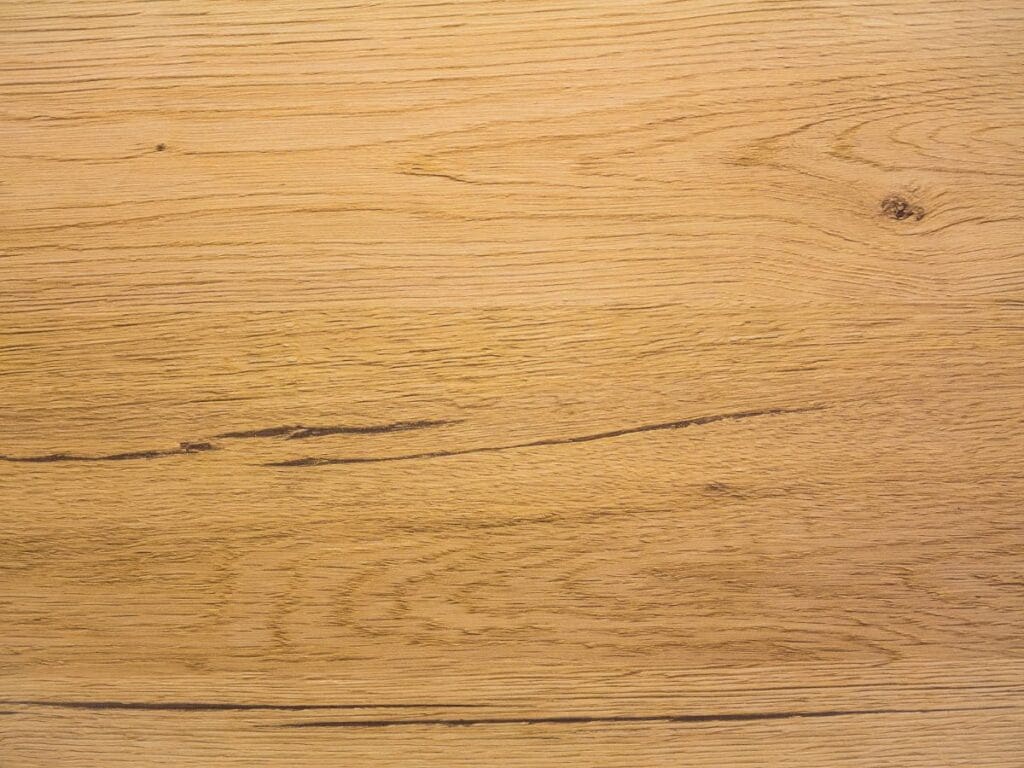Your floors are one of the most significant features of your home—they set the tone for your space, and you’ll walk on them every day. That’s why it’s important to choose something that not only looks good but also fits your lifestyle and lasts for years to come.
Maybe you’re drawn to the natural warmth of wood or the way it instantly makes a room feel cozy and inviting. Perhaps you’ve noticed how wood floors have a unique way of blending with nearly any decor, whether your style is modern, rustic, or somewhere in between.
You need to think through the practical things that matter most while also having in mind the little details to help create a foundation for your house.
The Basics of Wood Flooring
There are different types, each offering unique advantages and challenges, and knowing where to begin makes the process smoother. Your home is personal, and so is your flooring.
What you need may differ depending on how you live, who shares your space, and even the climate where you reside. Every plank is unique, with grain patterns and slight imperfections that tell a story and make your floor truly one of a kind.
Solid Hardwood vs. Engineered Wood
Solid hardwood is crafted from a single piece of wood and is known for its traditional feel and long lifespan. If you value the idea of having flooring that can evolve with your home through refinishing, solid hardwood might stand out as the ideal option.

Engineered wood, on the other hand, offers something different. It’s made from layers of wood and designed to combine natural beauty with modern construction.
If your home has fluctuating humidity levels or if you’re working on a tighter budget, engineered wood can often fit the bill without compromising on the overall feel of natural wood.
How to Match Wood Flooring to Your Space
When choosing the right wood flooring, you have to consider how it will harmonize with the room’s size, lighting, and existing elements. When you’re making this decision, think about the role each room plays in your life.
Is it a place for gathering with family, hosting friends, or finding quiet time? These factors influence how the flooring will look and feel in your home.
1. Room Size and Natural Light
Light-colored wood can make smaller spaces feel more open, while darker tones can bring coziness to larger rooms. If your room is on the smaller side and lacks windows, lighter wood can create the illusion of space and airiness.
Natural light also plays a huge role. Sunlight can highlight the natural grain and texture of wood, adding depth and richness to the room. However, keep in mind how light changes throughout the day.

A floor that looks bright and cheerful in the morning might take on warmer or cooler tones as the day progresses.
2. Coordinating Tones with Furniture and Walls
Your flooring doesn’t need to match your furniture and walls perfectly, but it should complement them.
- If your furniture is dark and bold, a lighter wood floor can create balance and prevent the room from feeling too heavy.
- If your decor leans light and neutral, a rich-toned floor can add warmth and grounding.
Consider undertones as well. Wood flooring often has subtle hints of yellow, red, or gray, and these can either clash with or enhance the rest of your room. Testing samples in your space is a great way to see how the tones work together before making a commitment.

3. Choosing Light, Medium, or Dark Wood
The shade of your flooring sets the overall mood of the room.
| Shade | Examples | Best For | Aesthetic Effect |
|---|---|---|---|
| Light | Maple, Ash, White Oak | Small spaces, modern homes | Creates an airy, open feel, reflects light |
| Medium | Oak, Hickory, Birch | Versatile for any space | Balanced look, blends well with various styles |
| Dark | Walnut, Mahogany, Brazilian Cherry | Large rooms, sophisticated spaces | Adds drama and depth, absorbs light |
- Light woods, like maple or ash, are great for creating a fresh and airy vibe. They reflect more light, which helps brighten dim spaces or rooms with minimal windows.
- Medium-toned woods offer versatility, blending well with a wide range of styles and colors. They strike a balance between being too stark or too heavy, making them an easy choice for many homes.
- Dark wood, like walnut or mahogany, brings drama and sophistication. It pairs beautifully with bold furniture and accents but can also ground more minimal designs.

The Importance of Wood Species
The type of wood you choose for your flooring can shape everything from its appearance to how well it fits your daily life. Each wood species offers a unique combination of color, grain pattern, and hardness.
The species of wood you select affects how your flooring will handle wear, weather, and time.
1. Popular Wood Species
Some wood species have become household favorites for good reasons.
| Wood Species | Color Tones | Hardness (Janka Rating) | Grain Pattern | Best For |
|---|---|---|---|---|
| Oak | Light to medium brown | 1290 (red oak), 1360 (white oak) | Prominent, wavy grain | Classic homes, high durability |
| Maple | Pale cream to light brown | 1450 | Subtle, fine grain | Modern, minimalistic interiors |
| Walnut | Dark brown to purplish hues | 1010 | Straight, elegant grain | Luxury, warm ambiance |
| Hickory | Light to medium brown | 1820 | Bold, contrasting grain | Rustic, high-traffic areas |
| Teak | Golden brown to dark brown | 2330 | Tight, uniform grain | High-moisture areas, exotic look |
- Oak, for instance, comes in a range of shades and has a grain pattern that’s interesting without being overwhelming.
- Maple offers a lighter, cleaner look, perfect if you want a more subtle floor that doesn’t steal the spotlight.
- Walnut is known for its deep, rich tones that create a good looking, sophisticated feel.
- If you’re drawn to something a little more exotic, species like teak or Brazilian cherry can add a bold touch with their vibrant colors and distinct patterns.




2. Hardness and Wear Resistance
If your floors will face a lot of foot traffic, pets, or kids, harder woods like hickory or oak may be a better fit. They can handle the wear without showing too much damage over time.
Softer woods, such as pine, have their charm too, with their old look and natural aging process. They may show more dents and scratches, but for some, that’s part of the appeal.
3. Grain Patterns and Texture
The grain pattern of a wood species can have a surprising impact on your flooring’s overall look. Tight, subtle grains, like those found in maple, create a smoother, more uniform appearance.
If you want something with more personality, species like oak or hickory, which feature bold, prominent grains, can add visual interest.


Texture is another element to consider. Some species naturally have more variation, knots, or unique marks that lend character to the floor.
This is perfect if you’re aiming for a more natural or rustic vibe. For a sleeker, modern feel, choose a wood species with minimal grain and a smooth finish.
Finish and Style Options
The finish and style of your wood flooring determine how your floors will feel, how easy they will be to maintain, and how well they will age with time. This is where your personal preferences and lifestyle really shine through.
A thoughtfully chosen finish and style can bring your wood floors to life and make them a seamless part of your home.
1. Matte, Satin, or Glossy Finishes
The finish of your flooring affects both its look and functionality.
- Matte finishes are perfect if you prefer a more understated and natural look. They reduce glare and are great for hiding small scratches or imperfections that might happen over time.
- Satin finishes are a mid-point providing a slight sheen that feels elegant but isn’t overly shiny. It works in a variety of spaces so it might be your ideal pick.
- Glossy finishes bring a bold, polished feel to your floors. They reflect light beautifully, which can make your space feel larger, but they may require a little extra upkeep to keep them looking pristine.
2. Textures
The texture of your flooring can completely change the feel of a room.
- Smooth, polished surfaces create a clean, modern look that pairs well with minimalist or contemporary designs. They’re great if you want your flooring to blend seamlessly with the rest of your home.
- For a bit more character, distressed or hand-scraped finishes offer an old charm. These textures mimic the look of reclaimed wood, giving your floors a lived-in, warm feel.
- Wire-brushed finishes fall somewhere in between. They highlight the wood’s natural grain and texture without feeling overly rugged.
3. Classic vs. Contemporary Styles
Your choice of style reflects your home’s personality.
- Classic styles, such as narrow planks and traditional wood tones, give an aging atmosphere. These work well in homes with vintage or traditional decor, adding a sense of history and sophistication.
- Contemporary styles embrace bold choices, such as wider planks or unconventional colors like gray or whitewashed wood. These styles can make a statement and are perfect if you’re looking to create a modern, unique vibe.
You can pair these choices with the right furniture and decor to ensure your flooring feels intentional and cohesive.
Budget Considerations
Wood flooring is an investment in your home, but that doesn’t mean it has to break the bank. With so many options available, it’s possible to find a beautiful floor that fits your budget and your style.
Thinking about your budget also involves looking at long-term value, like how well the flooring will hold up over time and what kind of maintenance it might require.
1. The Price Range
Wood flooring prices vary widely depending on the type, species, and finish you choose.
- Solid hardwood often costs more upfront, but its ability to be refinished multiple times can make it a cost-effective choice in the long run.
- Engineered wood, while generally more affordable, offers similar beauty and can work well in areas where solid wood may not be suitable.
- Exotic species or specialty finishes may come with a higher price tag, but they also bring unique character and flair to your home.
- Domestic species like oak or maple tend to be more budget-friendly while still offering durability and style.
2. Where to Save and Where to Spend
Not every part of your flooring budget needs to go toward the most expensive option. If your heart is set on a premium wood species or a custom finish, consider using it in high-visibility areas like the living room or entryway.
For less trafficked spaces, such as guest bedrooms, a more economical option can work just as well. Installation is another area to consider carefully.
While professional installation can add to the overall cost, it often ensures a better result and fewer issues down the line.
Practical Factors to Think About
Practical details like maintenance, climate, and long-term performance play a big role in how satisfied you’ll be with your choice. These factors ensure your flooring not only complements your home but also fits into your daily life without constant worry or upkeep.
1. Maintenance and Cleaning
Every type of wood flooring has its own cleaning routine, but none are truly high-maintenance. Regular sweeping or vacuuming can keep dirt and debris from scratching the surface, while occasional mopping with a wood-safe cleaner keeps the floor looking fresh.
For homes with a lot of activity, consider finishes that are forgiving to everyday wear and tear. Matte and satin finishes tend to hide smudges and dust better than glossy ones, which might need more frequent polishing to maintain their shine.
2. Handling Humidity and Climate Changes
Wood flooring reacts to its environment, which makes your local climate an important consideration. In areas with high humidity, solid hardwood may expand and contract, leading to gaps or buckling over time.
Engineered wood is a more stable option for these conditions since its layered construction resists moisture better. Homes in dry or fluctuating climates might benefit from proper acclimation before installation.
Allowing the wood to adjust to your home’s temperature and humidity can prevent future issues. If you live in an area with extreme conditions, a dehumidifier or humidifier can also help maintain your floors.
Why Hardwood Floors Are a Timeless Choice for Your Home
Hardwood floors aren’t just a design feature—they’re part of what makes a house feel like home. They carry a sense of warmth and character that few other materials can match, and their adaptablility allows them to grow with your style over the years.
One of the reasons hardwood floors remain such a popular choice is their ability to stand the test of time, both in durability and style. Trends come and go, but the natural beauty of wood and its ability to adapt to different settings make it a choice you won’t regret.
Every decision, from the species of wood to the finish and style, contributes to a larger picture: a home that feels truly yours. And that’s what makes hardwood floors timeless: they’re as personal and enduring as the life you build on them.


